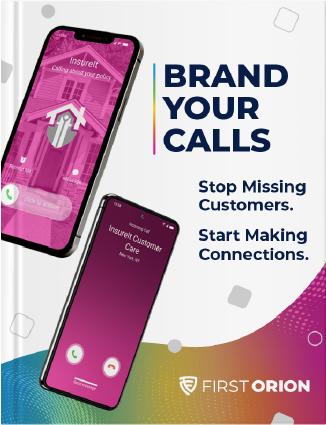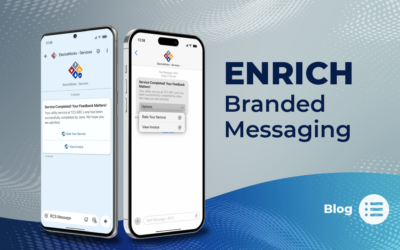Let’s face it: it can be rough working as a call center agent in 2022. Between irate customers, missed outbound calls, and frustrating conversations that can end without a resolution, call center agents have a tough task making sure the customer experience is enjoyable.
When a customer has a less-than-ideal experience with a call center agent, it reflects poorly on the business; in turn, a bad experience can lead to fewer call pickups, a damaged reputation, and, ultimately, lost revenue.
According to research conducted by NICE – a leading provider of cloud-based CX software – 87% of consumers say they are willing to buy more products from a company that has an exceptional customer service experience. More importantly, 81% said they are willing to recommend a company to others if that company delivers a top-tier customer experience.
So, as you can see, customer experience is top of mind for customers when they choose whether to answer your outbound calls or make an inbound call to an agent to help them solve a query. And top-rated customer service can lead to better, more frequent recommendations for your agency.
But we think being a call center agent can be a great experience! In fact, we’ve pinpointed a few best practices that call centers and contact centers can implement to boost their productivity and improve workplace satisfaction, for themselves and their customers.
Here are 10 call center best practices that you can implement in 2022 to improve the customer experience.
Call Center Best Practices
1. Use Feedback to Improve Customer Experience
Customer feedback is paramount to the success of your call center. It’s where you learn whether your phone calls were a success, where they can improve, or if they were a complete failure (It happens sometimes).
To get honest feedback from your customers, it’s important to reach out to them in a way that’s comfortable. An emailed survey, a request to give feedback at the end of a phone call, or a simple “How did we do?” text message, feedback can help you identify pain points and improve the customer experience.
Identifying where you come up short can help you better understand your customers and the type of customer experience, they want from you.
2. Focus on Key Metrics (KPIs)
While customer feedback is important, identifying your KPIs – key performance indicators – for your business is also highly recommended.
KPIs can be any quantifiable target that your business shoots for to analyze whether you’re seeing success or failing to measure up to your goals.
For call and contact centers, KPIs can be measurable data points like:
- First Call Resolution (FCR)
- Average speed of call answers
- Average time in queue
- Percentage of calls blocked
- Average abandonment rate
- Customer Satisfaction Score (CSAT)
Your KPIs will vary, depending on how you measure success. It’s important to set those KPIs with your agents. Hard data doesn’t lie, and focusing on key metrics can help to quickly identify where you can improve the customer experience.
3. Reduce Call Volume with Easy-to-Access FAQs and Knowledge Hubs
What if there was a readily available tool that could free up your call queue and reduce the number of calls that you needed to answer every day?
Well, have you ever considered a knowledge hub?
Knowledge hubs, which often include Frequently Asked Questions web pages, are centralized locations on your website that can provide answers to commonly asked questions.
A good FAQ section on your website can prevent unnecessary calls from flooding your call queue. It provides a place for the customer to answer the question on their own.
Consider adding a FAQ or fleshed-out knowledge hub to your website to reduce your call volume.
4. Create a Positive Work Environment for Agents
A happy worker is a more productive worker. We’re not just repeating old adages here, it’s a fact!
According to research by Oxford University’s Saïd Business School, happy workers were shown to be 13% more productive than workers who felt indifferent about their work environment.
It’s important to create a positive, joyful work environment for workers, particularly in high-stress fields such as call centers.
Reward agents when they do well and let them know they’re valued with bonuses, extra time off, gift cards, shout-outs, or whatever reinforces a positive work environment at your call center.

Happy workers are shown to be 13% more productive than workers who feel indifferent about their work environment.
5. Upgrade Quality Assurance with New Technologies
Quality assurance is a key measurement to ensure that call center agents are performing at the highest level.
The traditional way of doing quality assurance involves recorded conversations between agents and customers. Those conversations are then reviewed to see if the agent completed objectives such as proper call etiquette, adherence to a script, following company best practices, and problem-solving skills.
However, this way of conducting quality assurance is time-consuming and not always accurate. Nowadays, there are tons of programs and software that can do the work for you. Consider investing in listening and AI scoring technology, such as Enlighten AI, to analyze every interaction and identify ways to improve the customer experience.
6. Try Remote-based Staffing
The COVID-19 pandemic forced businesses around the world, including call centers, to rethink how they staffed their workplaces. Lockdowns and shuttered office buildings sent people out of their cubicles and into their home offices (or kitchen tables). However, it also spurred a collective realization that remote work was possible and, in many cases, was a more efficient way to operate.
Remote work is becoming commonplace for many call centers, especially cloud-based CCaaS and UCaaS businesses.
There are tons of great resources out there if remote staffing seems like a good fit for your business. Check out what other call centers have experienced with a remote workforce, and see if it improves your efficiency and employee satisfaction.
7. Implement Custom Call Routing
Call routing, also known as automatic call distribution (ACD), is a call management process that intuitively queues up and distributes calls to the proper support team.
This call center best practice can offer many benefits to the customer experience by reducing, or even removing, the number of Interactive Voice Response (IVR) prompts necessary in your system.
Custom call routing can also:
- Reduce customer waiting times
- Increase agent productivity and performance
- Balance the workload for agents
- Reduce the time it takes to reach a resolution
Companies like Regal Voice offer a suite of call center products that can help direct your customers to the right representative and streamline the call routing process.
8. Focus on the Employee
One of the biggest issues call centers face is employee retention. A worker can leave their job at a call center for any number of reasons. But if agents aren’t given the resources they need, like annual training sessions, one-on-one time with leadership, or the proper tech they need to succeed, you’re more likely to lose them to a competitor.
Agents that are given the resources they need to succeed will stick with you for the long haul. Remember to focus on your employees’ needs and keep those lines of communication open. It can help them feel comfortable communicating any issues that prevent them from doing their job.
9. Invest in Callback Queues
What’s your call queuing situation? Do you go the traditional route and endlessly loop that “lovely” lounge music to your customers until they get so frustrated – or annoyed – that they hang up on you?
No one likes to wait in a call queue with no indication of when an agent will pick up the phone. But there’s a better, far less frustrating way to put your customers on hold: callback queues.
Callback queues are a more positive experience for customers. They allow the customer to get off the phone and wait for an agent to call them back when they’re available.
And, to ensure that your customer knows it’s you calling them back, consider investing in a Branded Communication solution for your outbound calls. Branding your calls with your name and reason for calling helps you to properly show up in customers’ call logs.
Brands often struggle with the phone call, and 87% of people admitted they don’t engage with unknown numbers.
With Branded Communication, even if they miss your call the first time, they’re far more likely to call you back if your name is in their call history.
10. Use a Branded Communication Solution
Nothing is more frustrating than calling a customer – sometimes multiple times in a day – and failing to get them to pick up their phone. There’s got to be a better solution, right?
Well, you’re in luck, because there absolutely is a better way – Branded Communication.
By branding your phone calls, you can let your customers know the name of your business, where you’re calling from, why you’re calling, and even your brand logo and colors. First Orion’s INFORM® or ENGAGE® solutions will help you identify your calls to clients.
Now, instead of seeing an unidentified 10-digit phone number pop up on their cellphones, the customers you’re calling will know who’s calling. Better yet, if they miss your call, they can see your name in their call history, increasing the chances that they’ll call you back!
We’ve found that 77% of people say they would view a brand as “more premium” if they clearly identified themselves. What’s more, nearly 3 in 4 say they would consider switching their business to a competitor who took steps to identify their calls.
Don’t get left behind by call centers that have made the switch to Branded Communication. Let your customers know that your calls can be trusted.
Discover New Ways to Boost Your Call Center this Year!
Call centers have important, but difficult, jobs. But by following a few call center best practices, you can ensure that your agents are happy, your business runs smoothly, and your calls get answered.




